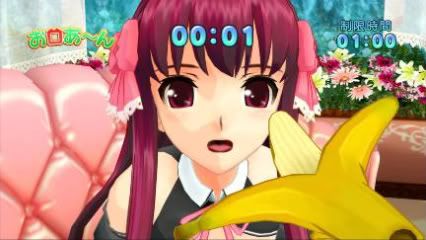 Censorship and video games have always shared an uneasy relationship. By and large, the industry has successfully self-regulated, with a few notable exceptions. Any controversy relating to graphic violence or sexually explicit content has been generated by fabricated moral outrage through mainstream media. Japan, on the other hand, still suffers from a more stringent policy of censorship relating to games, something that might surprise those who are familiar with the graphic depictions of sex and violence that can be found in manga and anime.
Censorship and video games have always shared an uneasy relationship. By and large, the industry has successfully self-regulated, with a few notable exceptions. Any controversy relating to graphic violence or sexually explicit content has been generated by fabricated moral outrage through mainstream media. Japan, on the other hand, still suffers from a more stringent policy of censorship relating to games, something that might surprise those who are familiar with the graphic depictions of sex and violence that can be found in manga and anime.
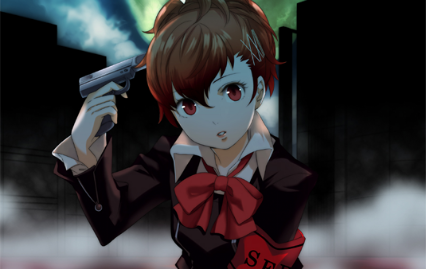
In 2006 there was an overhaul of the rating system, which led to the current CERO rating system of A, B, C, D and Z. An A rating means that the game is acceptable to any age, B is roughly equivalent to 12+, C to 15+ and D to 17+, with the Z rating, the only rating regulated by law, reserved for the over 18s. While the ratings system itself seems quite similar to that of other countries, the way in which each country rates games is wildly different. Persona 3 and 4 both received a B rating in Japan, making them suitable for ages 12 and up, whilst in Europe and America the games were deemed only for 16 and 17 years old respectively. This is likely due to cultural sensitivities over the use of firearms and the perceived image of suicide, especially in America, but this is a rare case. Japan’s rating certification organization is more stringent than its Western counterparts. Infamous is a particularly curious example of a Z rating, putting it alongside games such as MadWorld and Gears of War.
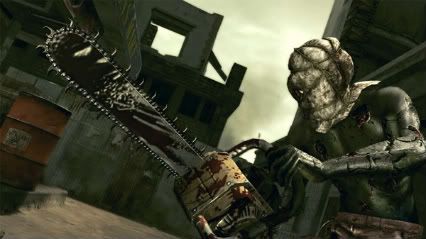 It isn’t so much the rating system which is curious but rather the censorship of certain titles. In an effort to keep away from a Z rating, games often either have the blood removed or altered in some manner. Uncharted and No More Heroes are two examples of games that are oddly bloodless in the Japanese versions. And for those who savored the rather macabre sight of Chris or Sheva being decapitated by a chainsaw wielding maniac in Resident Evil 5, be grateful that you didn’t pick up a Japanese copy of the game. Just before the deed is about to be done the camera tastefully pans down to focus on the lower back and legs of the character as their body goes limp. Because of cuts and censorship, all three games avoided the dreaded Z rating.
It isn’t so much the rating system which is curious but rather the censorship of certain titles. In an effort to keep away from a Z rating, games often either have the blood removed or altered in some manner. Uncharted and No More Heroes are two examples of games that are oddly bloodless in the Japanese versions. And for those who savored the rather macabre sight of Chris or Sheva being decapitated by a chainsaw wielding maniac in Resident Evil 5, be grateful that you didn’t pick up a Japanese copy of the game. Just before the deed is about to be done the camera tastefully pans down to focus on the lower back and legs of the character as their body goes limp. Because of cuts and censorship, all three games avoided the dreaded Z rating.
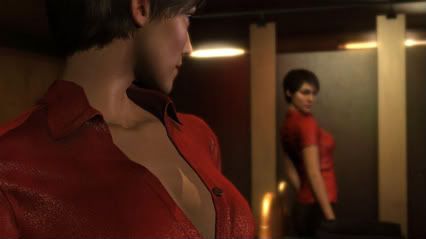
As did Heavy Rain, which had its already tasteful and tame sex scene rendered ridiculously tasteful and incredibly tame. Due to the amount it was cut it was very much a blink-and-you’ll-miss-it scene which left me slightly confused as to whether it had actually occurred, or whether the two characters had simply brushed their bare shoulders together as they lay on the bed. In Japan suggestion rather than graphic depiction of sex seems to be the key. This is often reflected in the games which are misleading labeled as ‘erotic’ by Western audiences. Three such examples were evident at the Tokyo Game Show this year, and if you had kept yourself informed about the games on display, you may have heard of The Idolm@ster 2, Dream Club Zero and GalGun. They differ greatly in the extent of the suggestive content in the game, but none feature anything more graphic than a flash of exposed underwear.

That’s not to say that there isn’t content that many would baulk at. Of the three, The Idolm@aster 2 is certainly the most famous. The game revolves around managing a Japanese all-girl pop group, although it will also feature a male group, and is essentially a rhythm action game with a strong emphasis on choosing costumes, venues and camera angles in order to create your own concerts. Your character, an unnamed rookie producer, chats to the group and members of the production company. What will make some pause for thought is that your dialogue options range from very sweet and caring to openly perverted. As the girls are as young as 12, this suggestive dialogue is rather inappropriate. The Idolm@aster is rated C.
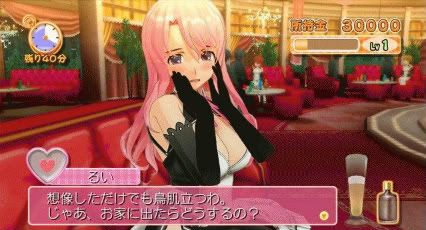
Dream Club Zero, the sequel to Dream Club, is a love simulation game in which the protagonist is a patron of a maid themed hostess club. Money can be earned through part time jobs and can be spent at the titular hostess club to buy drinks, food, and presents for the maids. By answering and asking questions, giving gifts, completing mini games and ordering food, you attempt to win favor with the staff and eventually to form a romantic relationship. This relationship is never depicted in a graphic manner and the game is surprisingly tame in that respect, but there are still enough suggestive elements to ensure that it would likely get a higher rating than the C with which it is classified in Japan. Even leaving aside the already infamous first person perspective banana feeding scene, the fact that an important way to curry favour is through consuming alcohol and getting a girl drunk would likely boost the age rating to something closer to the legal age of the country.
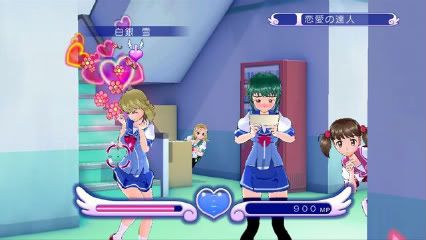
Galgun is the game which really garnered the most foreign interest at the show. A new intellectual property, the game is essentially an on-rails shooter. As you go around a school, dozens of female students run at you trying to give you love letters. By shooting them you seem to make them fall more deeply in love with you and their reaction is, to put it rather indelicately, clearly orgasmic. There was also a mini game sequence in which you rotate the camera around a girl and shoot her in erogenous areas in order to progress. The demo finished with a boss battle against a tentacle monster that had captured a girl. The game is obviously very tongue-in-cheek about its subject matter and is an effective parody of the erotic anime genre, but that doesn’t really stop it from being slightly disturbing to those unaware of this particular subculture. Though it has yet to be released I would suspect that, barring the inclusion of anything more explicit than was in the demo I played, it will be classified as a C or D. Doki Doki Majo Shinpan only got a C rating after all, and that involved using the DS stylus to examine female characters.

My point isn’t to make fun of Japanese culture at all, but instead to highlight some of the cultural differences Japanese and Western games and how the perceptions of what is appropriate differ. It isn’t simply that Western games aren’t suggestive rather than explicit in their content. Leisure Suit Larry is a classic example of a game which is suggestive rather than explicitly erotic, but even in that game whilst the content isn’t explicit, the suggestiveness is. It is about a character who wants to have sex. None of the three games mentioned above fall into the same category and, barring games made specifically as erotic games, this is true of most Japanese games.
The rating system in every country stems from the culture of the country itself. Through either censorship or design, games in Japan tend to suggest rather than depict, whether it be a decapitation or oral sex.




















Yeah, I’m never gonna get my virtua-girlfriend that after grooming for a year, I can cut off her hands and feet and have my way with her!!!!!
Hahahaha! Sorry. It’s weird to think that some poeple find anything erotic about Anime girls at all, THEY’RE CARTOONS PEOPLE! Calm down.
Still, each to their own I suppose.
I’d say its the “what if fantasy” that makes anime girls and certain videogame characters erotic, they are also drawn with a perfect image, proportions, etc.
Lara Croft anyone? The models who have portrayed her and Angelina jolie have entered the minds of many a teenager and adult as well as the polygon model herself.
& if your wife/ girlfriend dressed up as ms.croft or anime girl for your entertainment. you wouldn’t say no..
I love japan; the language, people and culture. although I know squat about the culture. don’t have the time to learn nor the money to go there.